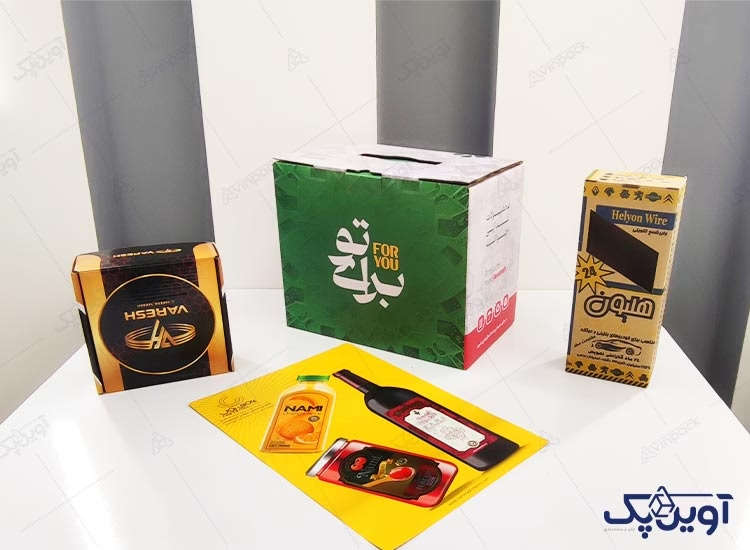
To address the query "What is the difference between laminated cardboard and flexo cardboard?" in detail, let’s break down each term and then compare them thoroughly.
What is Laminated Cardboard?
Laminated cardboard refers to cardboard that has undergone a lamination process, where an additional layer—typically a thin plastic film—is applied to its surface. This lamination serves several purposes:
- Protection: The added layer shields the cardboard from moisture, grease, and physical wear, making it more durable. This is particularly useful for packaging that needs to withstand environmental factors or rough handling.
- Enhancement: Lamination can improve the cardboard’s appearance by adding a glossy or matte finish, enhancing visual appeal for retail packaging.
- Functionality: It can make the cardboard more resistant to smudging or fading, especially if printed designs are present, ensuring the packaging remains intact and legible over time.
In the packaging industry, laminated cardboard is often used for products requiring extra durability or an upscale look, such as premium boxes or containers exposed to humid conditions. The lamination process typically occurs after printing, sealing the printed surface beneath a protective layer, though the exact sequence can vary based on specific needs.

What is Flexo Cardboard?
Flexo cardboard, while not a universally standardized term, most logically refers to cardboard that has been printed using the flexographic printing process. To understand this, let’s explore flexography:
- Flexographic Printing: Flexography is a high-speed printing technique that uses flexible relief plates (often made of rubber or photopolymer) and fast-drying inks. It’s widely used in the packaging industry because it excels at printing on various substrates, including uneven or non-porous surfaces like cardboard.
- Applications: This method is ideal for producing large volumes of printed packaging materials, such as corrugated shipping boxes, retail product boxes, and labels. It’s cost-effective for bulk runs and can handle the textured surface of corrugated cardboard effectively.
Thus, flexo cardboard is best understood as cardboard that has been decorated—whether with text, logos, or designs—via flexography. The term emphasizes the printing process rather than the cardboard’s physical composition. In practice, this often involves corrugated cardboard, a common substrate for flexographic printing due to its widespread use in packaging.
Key Differences Between Laminated Cardboard and Flexo Cardboard
While both laminated cardboard and flexo cardboard relate to cardboard used in packaging, they describe distinct aspects of its preparation. Here’s a detailed comparison:
- Process Focus:
- Laminated Cardboard: Involves a surface treatment where a laminate layer (e.g., plastic film) is applied. This is a physical enhancement process, not related to how the cardboard is decorated.
- Flexo Cardboard: Refers to the application of printing using the flexographic method. It’s about how designs or information are added to the cardboard, not its structural modification.
- Purpose:
- Laminated Cardboard: Aims to protect and enhance the cardboard, improving durability, resistance to external elements, and sometimes aesthetic appeal.
- Flexo Cardboard: Focuses on decoration, delivering high-quality printed images or text for branding, instructions, or identification.
- Material Outcome:
- Laminated Cardboard: Results in a composite material with an added layer, altering its surface properties (e.g., waterproofing or glossiness).
- Flexo Cardboard: Remains structurally the same as the original cardboard, with the addition of printed content; no protective layer is implied by the term.
- Typical Use:
- Laminated Cardboard: Common in applications needing durability or a premium finish, such as food packaging or luxury product boxes.
- Flexo Cardboard: Prevalent in mass-produced packaging like shipping boxes or retail displays, where efficient, large-scale printing is key.
Can They Overlap?
It’s worth noting that laminated box and flexo cardboard are not mutually exclusive. In fact, they often complement each other in packaging production:
- A piece of cardboard might first be printed using flexography (making it “flexo cardboard”) and then laminated to protect the print (making it “laminated cardboard”).
- For example, a cereal box could feature colorful flexographic printing covered with a glossy laminate for both visual appeal and protection.
However, the terms themselves highlight different processes: lamination modifies the cardboard’s surface, while flexography defines how it’s printed.
Illustrative Examples
To clarify further:
- Scenario 1: Cardboard is printed with offset lithography and then laminated with a plastic film. This is laminated cardboard, but not flexo cardboard.
- Scenario 2: Cardboard is printed using flexography without any lamination. This is flexo cardboard, but not laminated cardboard.
- Scenario 3: Cardboard is printed with flexography and then laminated. This qualifies as both laminated and flexo cardboard.
Summary of the Difference
In essence, the difference between laminate carton boxes and flexo cardboard lies in what each term emphasizes:
- Laminated Cardboard: Focuses on the addition of a protective or enhancing layer, typically for durability and appearance.
- Flexo Cardboard: Highlights the use of flexographic printing to apply designs or text, emphasizing the decoration method.
Both are critical in the packaging industry, but they address different needs: lamination enhances the material itself, while flexography decorates it. Understanding this distinction helps in selecting the right cardboard treatment for specific packaging requirements.
Comments on “The difference between laminated cardboard and flexo cardboard”